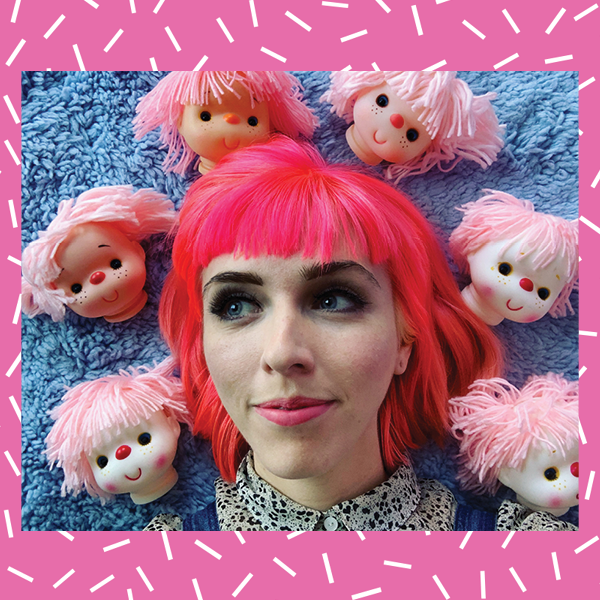
FIDM Welcomes Guest Speaker From Chanel
FIDM Merchandising & Marketing Director Mimi Su recently hosted her friend and former colleague, Jennifer Kim, Group Director of Client Analytics at Chanel, as a guest speaker to share her industry story in a virtual meeting with students in the Premier Marketing and Merchandise Product Development Groups. Now based on the East Coast, she has held positions in planning and analytics in both mass market and luxury including Ross, Armani Exchange, Williams Sonoma, Dior, and now Chanel.
Growing up, “I had a definite affinity for creativity,” she shared. Her parents imagined her future as a biomedical engineer, but that was not the path she decided to pursue. “I knew my skill set was in analytics, and I had always had an interest in fashion” she said, but needed to get her foot in the door. Knowing her skills were analytical, she started off her retail career at Ross as a Regional Analyst.
After a year at Ross, she took a position at Armani Exchange in planning, responsible for all women's categories. This is where she learned her foundation of planning, with a structured team and supportive director. After over three years, next came a move to San Francisco and a role at Williams-Sonoma, a large publicly traded company, making the switch from women’s categories to home goods. It was a big change to go into planning for furniture and lighting, but it was a positive career move. "It’s important to be able to step outside of the box," she said.
Even in a large company such as Williams-Sonoma, she said it was important to the company that you fit in with the company culture. “The interview process took two days. I met with 6 or 7 people on the first day, then 4 or 5 more people on the second day.” She loved the company and spent four years there before moving back to the East Coast to be a Business Planner at Dior, where she met Mimi Su, a Dior merchandiser.
“If you are a good buyer, merchandiser, or planner, you can do it with any company,” Mimi Su said to the students.
It was another big change for Kim, pivoting from contemporary fashion, to home, and then to luxury. “It’s a much smaller world,” she said. “The teams are smaller—I was a team of one. You will get your hands in different projects and work with different teams and many times do things outside of your direct job function. But that helps expose you to different areas as well." Another significant difference: "In luxury, the client experience and brand image is the focus, not just the bottom line like in mass market.”
Jennifer took a brief hiatus after six years at Dior. During this period, a former colleague from Dior reached out to her and said they were looking for someone with her skill set for a position on a new team at Chanel.
“My analytical skills and that connection, that network, provided me the opportunity with Chanel.”
“We always tell students how important networking is,” Mimi Su added.
In her position in client analytics at Chanel, Jennifer puts on the product lens and works closely with the merchant team. She is not planning sales or inventory but looks at large sets of data and identifies trends. “I figure out the story behind the data and tell that story,” she said. "As an analytical person, I use that same muscle (from planning) but now apply it in a different way,” she said to the students.
“It’s like elevated storytelling,” Mimi added.
Mimi then led the students in an exercise to identify and reinforce the differences between mass market and the luxury sector. Luxury’s main focus is brand image, while mass market is more focused on sales goals. Luxury is about the client and their experience, the brand and its perception. Mass market has larger teams, better tools and resources. And it’s easier to get promoted. Luxury is client-obsessed. And your actual duties are more likely to go beyond your job description if you work in luxury. It’s more of an all-hands-on-deck type of environment.
Jennifer gave the students some insight as to which hard skills they should be honing while they’re still in school. She said Excel and PowerPoint are essential. “Know the formulas and how to create macros and pivot tables,” she said. “PowerPoint is super important. In my role, I use it every day. It’s the tool you need to create elevated storytelling. You’ll want to offset the tables and graphs with beautiful images. Be sure to use consistent formatting - you don't want any errors to distract from the important information you're providing.”
In her parting words of wisdom, Jennifer told the students they should follow their interests and not be afraid to pivot. “I came from planning and am in client analytics now and I love it. Your career path could change and shift, and it may not end up being what you think it will be right now. Pivoting has helped my growth, and find a different career that I enjoy.”
“Be open to feedback always—and being able to give feedback will help you grow, too,” she continued. “Be humble. Know when to ask for help. Be self-aware. Be respectful—soft skills go a long way. Be in a place of wanting to understand others."
"You may be generation Z, but once you’re in the workforce, you’ll be working with millennials, generation X, and boomers,” Mimi added.
She also emphasized the importance of networking. “Forming friendships in this industry is crucial. We call it our luxury family. The retail world, especially luxury, is small. It's not just networking for work opportunities - it's about creating real relationships. When it comes down to it, it’s more about life.”
Categories: Merchandise Product Development Merchandising & Marketing


